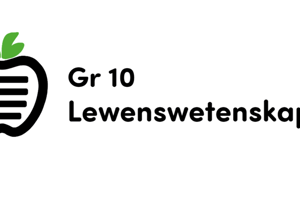Podcast
Questions and Answers
Which of the following is identified as an endangered 'flagship' species of the Indian Ocean coastal belt biome?
Which of the following is identified as an endangered 'flagship' species of the Indian Ocean coastal belt biome?
- Kloof Frog (correct)
- Natal Tree Frog
- Sharp-nosed Reed Frog
- Whistling Rain Frog
What is the primary factor limiting the occurrence of forests?
What is the primary factor limiting the occurrence of forests?
- Soil depth
- Soil nutrient status
- Water availability (correct)
- Geological substrates
Which tree is identified as a 'flagship' species for the Indian Ocean coastal belt, and is also the most northern species mentioned?
Which tree is identified as a 'flagship' species for the Indian Ocean coastal belt, and is also the most northern species mentioned?
- White Mangrove (correct)
- White Milkwood
- Black Mangrove
- Natal Strelitzia
Where are the largest areas of remaining tall forest found?
Where are the largest areas of remaining tall forest found?
Which of the following is NOT a type of forest mentioned in the text?
Which of the following is NOT a type of forest mentioned in the text?
What characteristic distinguishes coastal dune forests from other forest types mentioned?
What characteristic distinguishes coastal dune forests from other forest types mentioned?
Which factor allows scarp and riverine forests to develop, beyond rainfall?
Which factor allows scarp and riverine forests to develop, beyond rainfall?
What is the typical size of most forests?
What is the typical size of most forests?
Flashcards
Montane Forest
Montane Forest
A type of forest that grows in mountainous areas at higher altitudes.
Mistbelt Forest
Mistbelt Forest
A type of forest that grows in areas with frequent mist or fog, often occurring at medium to high altitudes.
Riverine Forest
Riverine Forest
A type of forest that grows along rivers, typically at lower altitudes.
Coastal Dune Forest
Coastal Dune Forest
Signup and view all the flashcards
Scarp Forests
Scarp Forests
Signup and view all the flashcards
Forest Soil Types
Forest Soil Types
Signup and view all the flashcards
Forest Water Requirements
Forest Water Requirements
Signup and view all the flashcards
Forest Rainfall Patterns
Forest Rainfall Patterns
Signup and view all the flashcards
Study Notes
Biomes Module 6 Objectives
- Biome definition: Extensive ecological unit, largely defined by climate, representing major life zones of large natural areas.
- Nine major South African biomes: Nama Karoo, Desert, Grassland, Savanna, Thicket, Fynbos, Indian Ocean Coastal Belt, Forest, Succulent Karoo.
- Biome location and characteristics: The nine biomes are spatially identified, along with their defining characteristics, including seasonal rainfall patterns and temperatures.
- Indicator species: Main animal and dominant plant species are crucial indicators of each biome.
Practical Requirements
- Nature guides need to understand how climate, geology, altitude, latitude, plants and animals interact to define biomes.
- Guides need to interpret clients' experiences and understand theoretical information, specifically about "flagship" species, within their area of expertise.
Introduction
- Biomes are ecological units characterized by distinctive plant species.
- Physiognomy, or overall appearance, is used to identify biomes.
- Examples include grassland, desert (bare ground after rains), and forest (canopy layers).
Biome Definition by Rainfall and Winter Temperatures
- Summer rainfall and winter temperatures define South African biomes
- Table 6.1 illustrates the correlation between rainfall and biome type.
- Each biome has distinct rainfall and temperature parameters.
Detailed Biome Descriptions (Examples)
- Nama Karoo Biome: Found on South Africa's central plateau, characterized by altitudes of 500-2000m and lime-rich soils, varied topography, and extreme temperatures and aridity, with the majority of rainfall in the summer.
- Desert Biome: Characterized by very harsh conditions, with extremely variable and low rainfall. Concentrated in the western part of South Africa, notably Namibia.
- Grassland Biome: Found on the high central plateau and in parts of KwaZulu-Natal. This biome is characterized by diverse topography, rainfall from 450 to 1 900 mm and varying altitudes.
Specific Biome Information
- Each biome (e.g. Fynbos, Savanna) is described according to factors like:
- Location (geographical extent)
- Altitude
- Rainfall patterns
- Soil types
- Dominant vegetation
- Characteristic animal life
- Specific "flagship species"
Studying That Suits You
Use AI to generate personalized quizzes and flashcards to suit your learning preferences.




